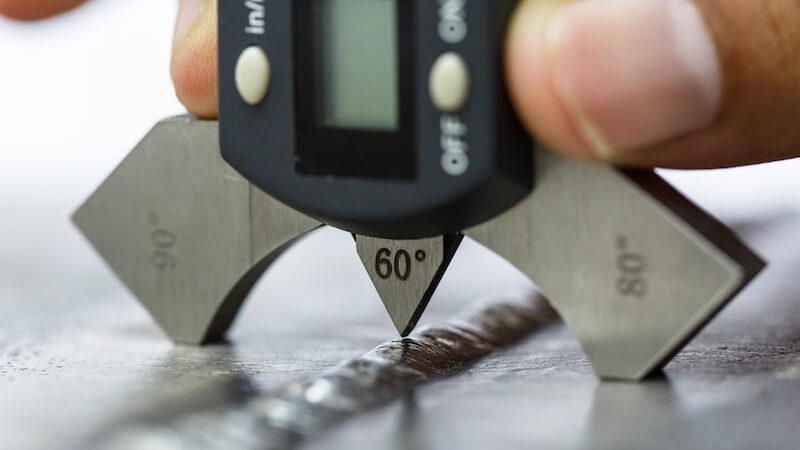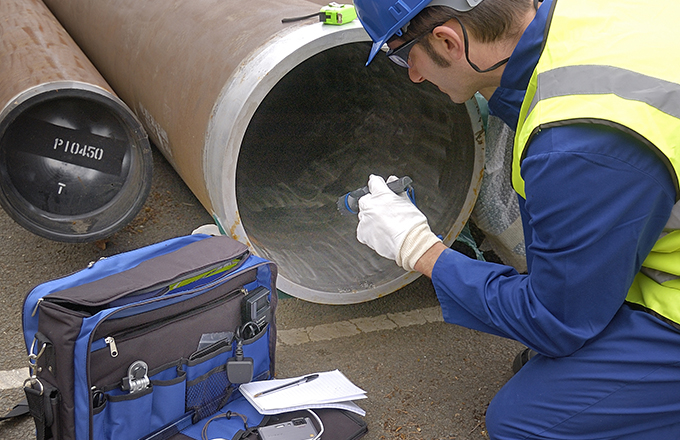The Essential Role of Welding Evaluation: Understanding the Procedures, Equipment, and Criteria That Govern Quality Assessment in Welding Operations
Welding examination is an indispensable element of quality guarantee in welding procedures, making sure the structural integrity and safety of bonded settings up. By employing an array of procedures, from pre-weld assessments to innovative non-destructive testing techniques, assessors systematically evaluate weld top quality against stringent sector criteria. The tools used in these procedures is essential for determining prospective imperfections that could compromise efficiency. Comprehending the interaction between examination techniques and regulatory compliance elevates crucial inquiries regarding the challenges dealt with in maintaining these important methods. What ramifications do these variables carry the overall effectiveness of welding procedures?
Relevance of Welding Evaluation
Welding assessment is crucial in guaranteeing the stability and safety and security of welded frameworks, as it frequently works as the last checkpoint prior to parts are taken into service. The relevance of this evaluation exists in its capacity to recognize potential problems that may jeopardize the performance and longevity of welded joints. Given the high stakes included, especially in markets such as building and construction, aerospace, and auto, thorough assessment processes are important.
Welding issues can occur from various variables, including inappropriate methods, poor tools, or unsuitable products. Failing to identify these problems can result in disastrous consequences, consisting of structural failures, which may lead to injury, loss of life, and significant economic liabilities. Welding examination provides a methodical method to review the high quality of welds, making sure conformity with sector requirements and governing demands.
Furthermore, effective welding evaluation adds to boosting total performance by lessening rework and guaranteeing that projects stay on time. By fostering a culture of quality control, companies can also boost their reputation and customer count on. Basically, the importance of welding assessment can not be overemphasized, as it plays a critical function in guarding both human lives and investments in framework.
Key Inspection Treatments
A comprehensive approach to evaluation procedures is important for making certain the top quality and integrity of bonded joints. Reliable evaluation begins with pre-weld evaluations, that include examining welding requirements, product properties, and joint designs to recognize potential obstacles. This prep work phase develops a baseline for top quality assumptions.
During the welding procedure, in-process evaluations are critical. Inspectors check specifications such as warmth input, travel speed, and electrode angle to make certain compliance with established standards. Aesthetic examinations are the initial line of defense, making it possible for the recognition of surface flaws, such as fractures, porosity, or insufficient combination.
Post-weld inspections involve even more advanced strategies to examine the integrity of the joint. This might include non-destructive testing (NDT) approaches such as ultrasonic screening, radiographic screening, or magnetic bit screening. These techniques supply deeper insights into the internal structure of the weld, disclosing potential flaws that might not be visible on the surface area.
Documents plays an integral role throughout the examination process. In-depth records of evaluations, including findings and restorative activities, make certain traceability and liability, eventually contributing to continuous enhancement in welding methods and total quality control.
Vital Devices for Evaluation
Efficient assessment relies upon using specialized devices made to examine the top quality and integrity of welded joints. Key devices in this procedure consist of aesthetic assessment devices, such as magnifying glasses and borescopes, which permit assessors to recognize surface area defects and abnormalities. Additionally, ultrasonic testing (UT) devices plays a vital role by utilizing high-frequency acoustic waves to discover inner problems within welds, making sure that concealed weak points are identified prior to they result in failure.
Radiographic screening (RT) is one more essential technique, making use of X-rays or gamma rays to generate pictures of the welds, exposing inner issues that may not show up via various other assessment approaches - Houston Welding Inspection. Magnetic bit testing (MT) is used for ferromagnetic products, enabling inspectors to find surface and near-surface issues by using electromagnetic fields and great bits
Dye penetrant screening (PT) is also significant, including the application of a fluorescent dye to disclose surface fractures and discontinuities. Each of these methods and devices adds to a detailed evaluation approach, guaranteeing that welded structures satisfy the essential top quality requirements and continue to be secure for usage in their respective applications.

Market Criteria and Laws
Quality control in welding assessment next is substantially influenced by industry requirements and regulations that control practices and make sure safety and security. These standards function as discover this info here benchmarks for high quality, describing the essential methods for testing, inspection, and documents. Secret companies such as the American Welding Society (AWS), the American Culture of Mechanical Engineers (ASME), and the International Company for Standardization (ISO) establish guidelines that welding specialists should stick to throughout the evaluation process.
Conformity with these criteria is not only an issue of regulative commitment but additionally a crucial part of threat management in welding operations. They incorporate different aspects, consisting of product option, welding methods, and credentials of workers. For example, AWS D1.1 describes structural welding needs, while ISO 3834 specifies top quality requirements for welding procedures.
In addition, market regulations determine the necessary certifications for welding assessors, demanding accreditations that verify their experience. This alignment with requirements guarantees that inspections are carried out regularly and precisely, inevitably guarding the integrity of bonded structures. Abiding by these industry criteria and regulations is paramount in promoting functional effectiveness and maintaining public trust fund in welding methods.
Difficulties in Welding Assessment


Welding examination deals with numerous obstacles that can influence the find integrity and security of bonded structures. One significant obstacle is the complexity of the welding processes themselves, which can differ significantly depending on products, joint arrangements, and ecological conditions. This irregularity necessitates an extensive understanding of varied examination methods and their proper applications.
Another obstacle depends on the developing nature of welding technology. As new materials and techniques are presented, examiners have to continuously update their expertise and abilities to successfully evaluate the high quality of welds. Additionally, the physical accessibility of weld locations can hinder evaluation initiatives, especially in constrained or high-risk atmospheres.
Furthermore, human aspects play a critical role in welding evaluation. Houston Welding Inspection. The subjective nature of visual inspections can lead to disparities, as various assessors may analyze the same weld in a different way. This underscores the relevance of standard training and qualification for examiners to make sure an uniform approach to high quality assessment
Last but not least, the integration of innovative technologies, such as automated inspections and expert system, provides both obstacles and opportunities. While these innovations can enhance accuracy and efficiency, they also call for significant financial investment and proficiency to apply effectively. Resolving these difficulties is essential for preserving the stability of bonded frameworks.
Verdict
Welding assessment is essential for making certain the safety and security and stability of welded frameworks. Via rigorous examination procedures, the use of customized devices, and adherence to identified sector standards, the top quality of welding operations can be methodically assessed. Difficulties continue the inspection process, yet the implementation of efficient techniques can alleviate threats linked with architectural failures. Inevitably, a durable welding evaluation framework not only guarantees compliance with guidelines yet also improves general operational performance and reliability.
Welding examination is an indispensable part of high quality guarantee in welding procedures, making sure the architectural honesty and safety and security of bonded assemblies.Welding inspection is crucial in guaranteeing the stability and safety and security of welded frameworks, as it frequently serves as the final checkpoint before components are placed into solution. Welding assessment supplies an organized strategy to review the quality of welds, guaranteeing conformity with industry criteria and regulatory needs.
Quality assurance in welding inspection is dramatically influenced by market requirements and regulations that control techniques and ensure safety. Key companies such as the American Welding Society (AWS), the American Society of Mechanical Engineers (ASME), and the International Company for Standardization (ISO) establish standards that welding professionals must adhere to throughout the assessment procedure.